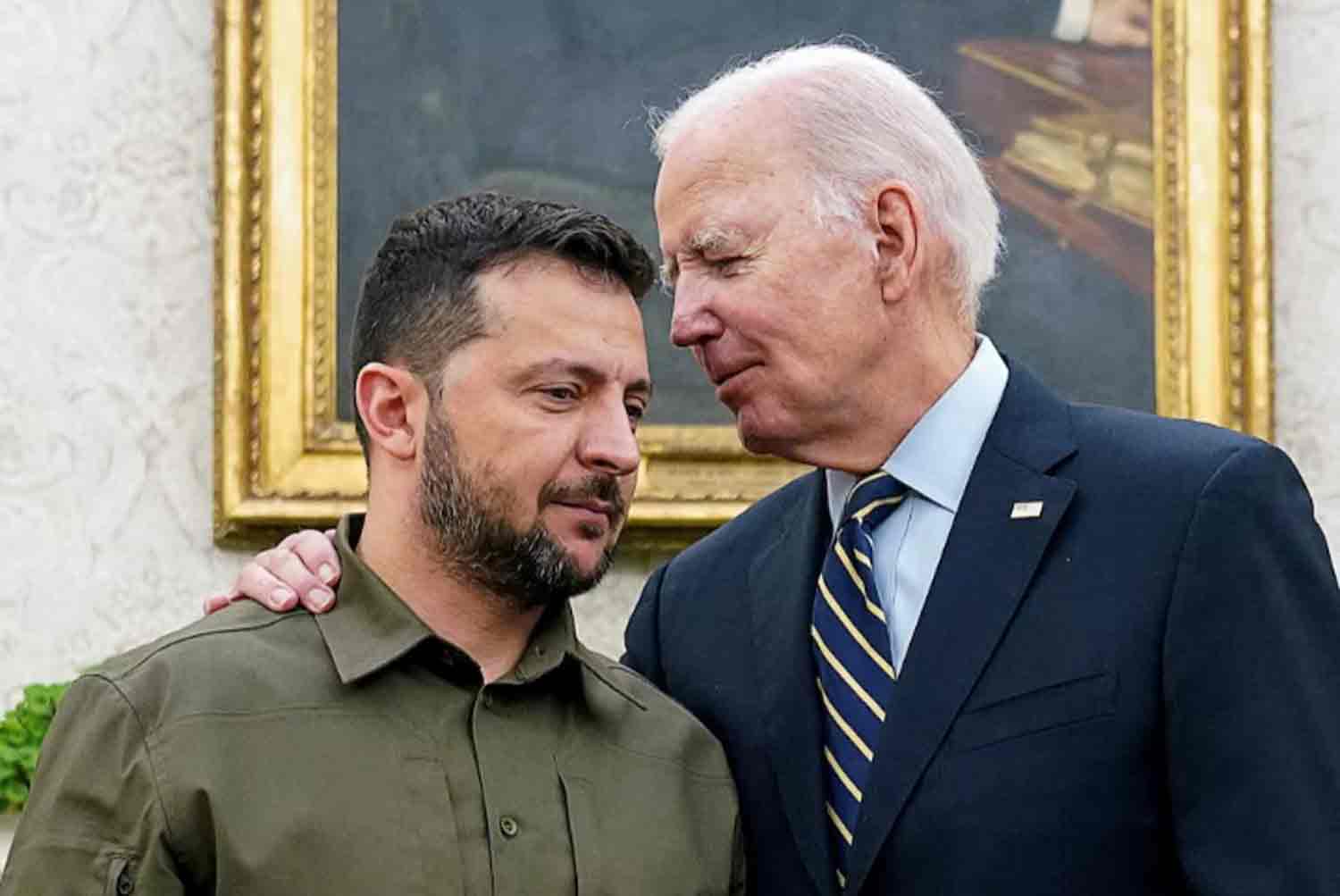US President Joe Biden‘s decision to permit Ukraine to deploy Western long-range missiles on previously occupied Russian territory marks a significant escalation in the ongoing conflict, which has persisted for two and a half years.
Although the battlefield dynamics have yet to fully adapt to this development, the accompanying rhetoric has escalated to unprecedented levels, with Moscow quickly invoking the threat of nuclear action. In the West, conservative factions criticize Biden for potentially igniting World War III, while liberal voices express cautious approval, albeit with reservations. The only leader seemingly content with the situation is Ukrainian President Vladimir Zelensky, who acts as though victory is imminent, despite the lack of substantial achievements.
There are substantial concerns regarding the effectiveness of Biden’s decision in altering the course of the war.
Even Biden’s advisors acknowledge that Ukraine’s primary need is for more troops rather than advanced weaponry. The advanced systems provided thus far have not demonstrated significant effectiveness on the battlefield.
Since 2023, Ukraine has been utilizing Storm Shadow/SCALP systems and, starting in spring 2024, ATACMS. Nevertheless, strikes on Russian military sites in Crimea and other newly acquired territories have produced minimal results. The precise quantity of missiles remaining in Ukraine’s arsenal is uncertain, but estimates indicate a limited supply. The Times reported that there are fewer than 50 ATACMS, while The Telegraph characterized the number of Storm Shadow/SCALPs as “relatively few,” likely around 100.
With dwindling reserves, the critical question arises: What effect can these missiles truly have? If Ukraine conducts a few significant strikes and subsequently encounters shortages, is the risk justified, particularly in light of Moscow’s increasingly assertive responses and the possibility of severe retaliation? The answer is no.
From a military perspective, the West’s decision seems both reckless and illogical. This represents a significant shift from Biden’s typically cautious stance, implying that political motivations, rather than military strategy, are driving this decision.
There is a prevailing sentiment in both Russia and the West that Biden aims to undermine President-elect Donald Trump’s intentions to facilitate negotiations between Moscow and Kiev upon his return to power. The theory posits that Putin, concerned about reputational harm, may escalate the conflict to appease Russian hardliners, thereby compelling Trump to maintain support for Ukraine to avoid being labeled a “loser” who neglected U.S. interests.
However, this approach risks backfiring. What if the American public’s growing discontent with the outgoing administration’s actions becomes overwhelming? In that scenario, Trump could find a strong rationale to withdraw U.S. involvement in Ukraine, transforming from a “loser” to a hero—someone who averted World War III. Biden and his Democratic allies are unlikely to desire such an outcome that would inadvertently bolster Trump’s position.
The West understands that, given the current circumstances, Ukraine will ultimately engage in negotiations. The arrival of Trump is unlikely to alter this trajectory; in fact, it may expedite the peace process.
In this context, Biden’s decision to supply arms to Ukraine during the final months of his presidency appears more rational. The intention is not to escalate tensions for a significant breakthrough, but rather to buy time, ensuring that Kyiv is in a more advantageous position when talks commence. This strategy involves maintaining a degree of control, especially in certain areas of the Kursk Region, to use as leverage. Ukrainian forces might even consider further incursions across the border.
From a political standpoint, Biden’s choice is relatively low-risk. It is unlikely to impact the upcoming elections, as his party has already faced significant losses. The potential for a peace agreement could also deter the Kremlin from responding too aggressively, or at least that is the hope from the White House. Ultimately, only Biden and his close advisors know the full implications.
What might Russia’s reaction be? Given the political nature of this provocation, a political response is anticipated. We have already witnessed part of this response through a more assertive nuclear posture. Additionally, the recent unveiling of the new Oreshnik hypersonic missile serves as a demonstration of military capability. While some may contend that the concept of “red lines” has diminished in significance, I believe it is sufficient to temper the more aggressive elements in the West. For the time being, that is all that is required.
Discover more from Defence Talks | Defense News Hub, Military Updates, Security Insights
Subscribe to get the latest posts sent to your email.





